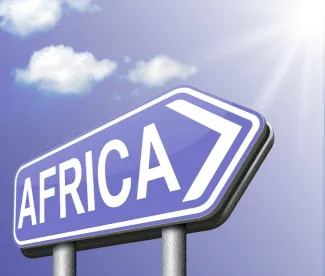Considerable attention has been paid to the recent signing of the Tripartite Free Trade Agreement (TFTA) which will bind three of Africa’s regional economic communities (RECs) together into one large free trade market of 26 countries, accounting for nearly 60 percent of the continent’s GDP. How significant the Agreement will prove to be lies in the (implementation) details. The parties to the Agreement chose a path toward integration that involves a gradual phased approach whereby each REC develops its own framework and blueprint. However, the three RECs — the East Africa Community (EAC), the Common Market for Eastern and Southern Africa (COMESA ) and the Southern African Development Community (SADC ) — are at very different levels of progress in this regard.
Although the EAC was (re-)formed only in 2000, this community of five nations has accomplished far more than its REC peers. A few of the many accomplishments include the adoption of an external tariff, an expansion and improvement of the port infrastructure in Kenya and Tanzania, prioritization of regional transport systems, and the adoption of common sanitary and phytosanitary measures.
Moreover, the EAC also has focused on important, but less flashy, process and systems improvements, such as harmonization of customs procedures, one-stop border crossings, and a system that allows sharing of customs clearance information. It is far from perfect, but the metrics show significant improvements, reducing the number of days of transit time from Mombasa to Kigali from twenty-one days to just six, for example.
In contrast, neither COMESA nor SADC has advanced its respective customs and trade agenda. COMESA, for example, has to build consensus among nineteen African member states — from Egypt to Swaziland — while doing so in three major languages (i.e. Arabic, English, and French). COMESA itself has recognized a “lagging behind” in meeting its regional commitments and is placing greater emphasis on monitoring implementation of policies on the part of member states. For the EAC, which comprises five member states, implementation and monitoring of agreements is much more manageable. SADC has made remarkable strides in regional integration through a competitive, interconnected power market, known as the South African Power Pool. However, it too has run into many barriers in establishing a functional customs union.
Some trade experts have commented that African countries should spend less time on “unachievable” agreements and more resources on regional infrastructure. Well, actually they need to do both: good roads and ports are meaningless if efficient clearance systems are not in place. At a minimum, implementation of the TFTA should focus on harmonizing the three member RECs’ external tariffs, customs procedures and standards. Introducing commonality and removing contradictions will be particularly important for Kenya and other countries that belong to two or more RECs.
The AU still has its sights set on signing a continent-wide free trade agreement (CFTA) by 2017. EAC Secretary General Richard Sezibera, usually cautious and careful, was enthusiastic about its prospects saying, “all that’s left is bringing in [the Economic Community of West African States], which shouldn’t be difficult.” In the end it all comes down to implementation, and that implementation for the TFTA will fall upon the “Tripartite Task Force of the Secretariats.” Whoever fills their ranks, they have an enormous task.



 />i
/>i

